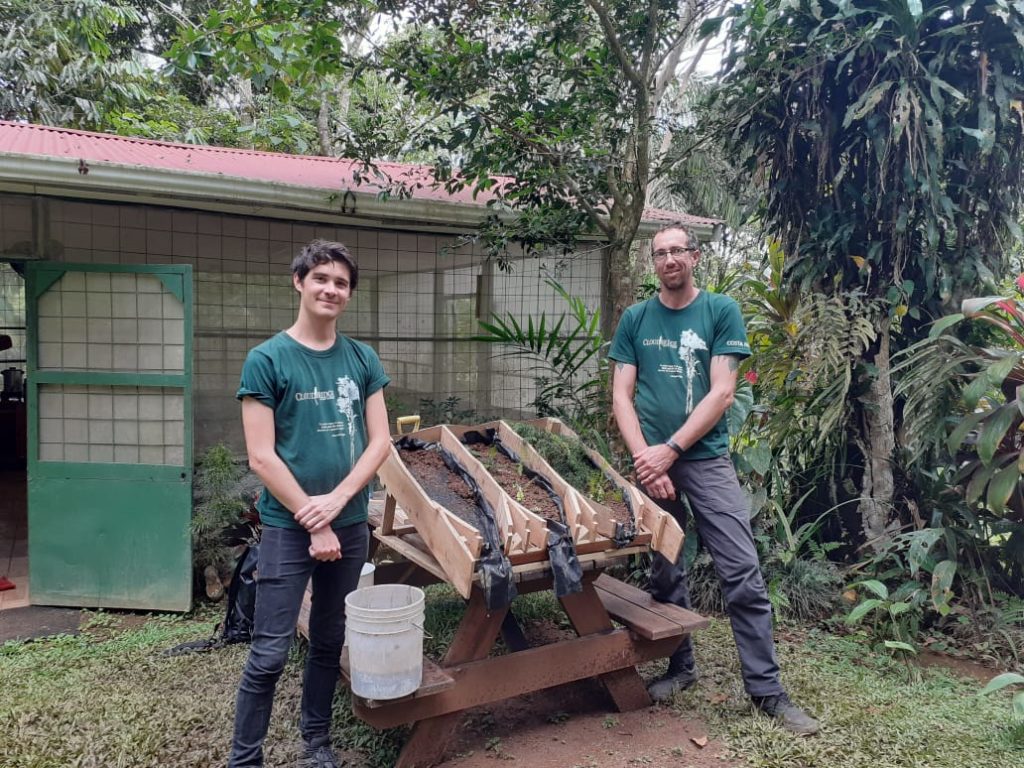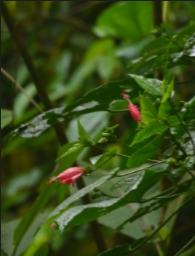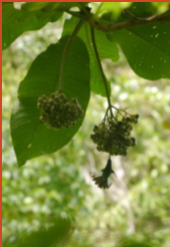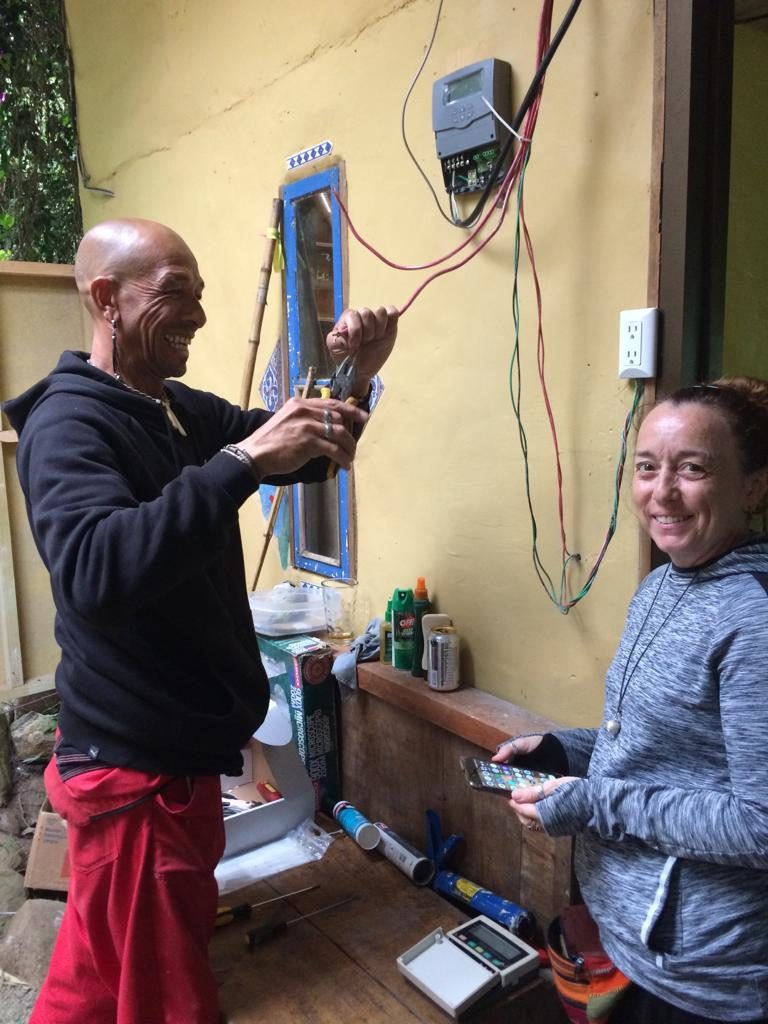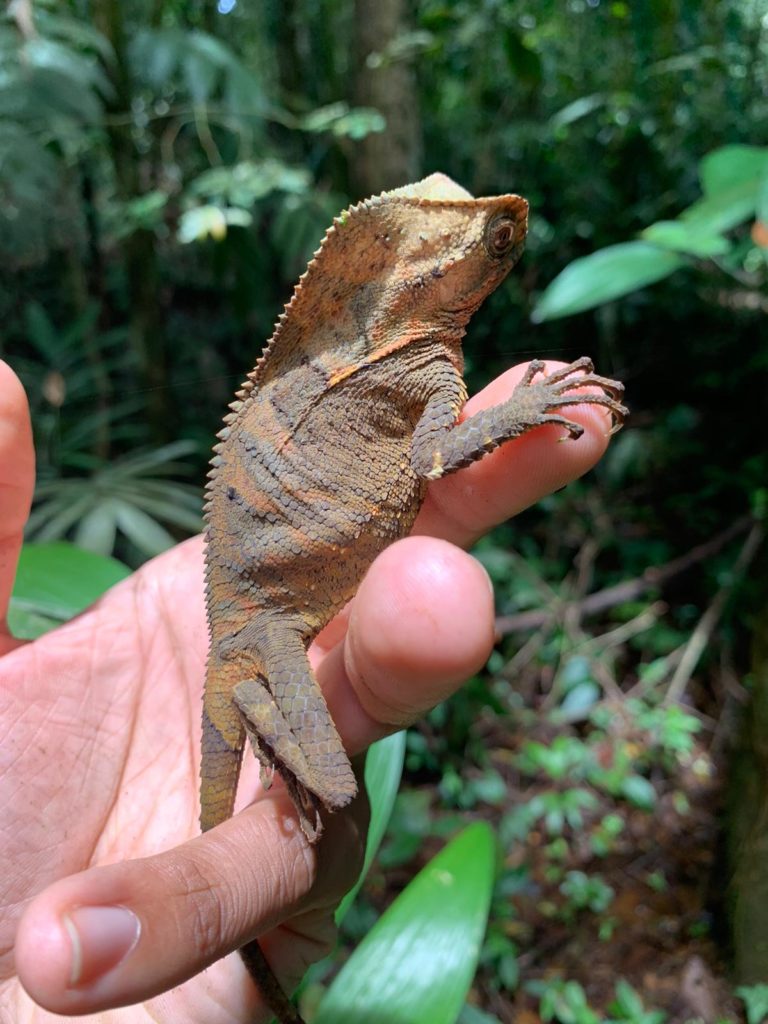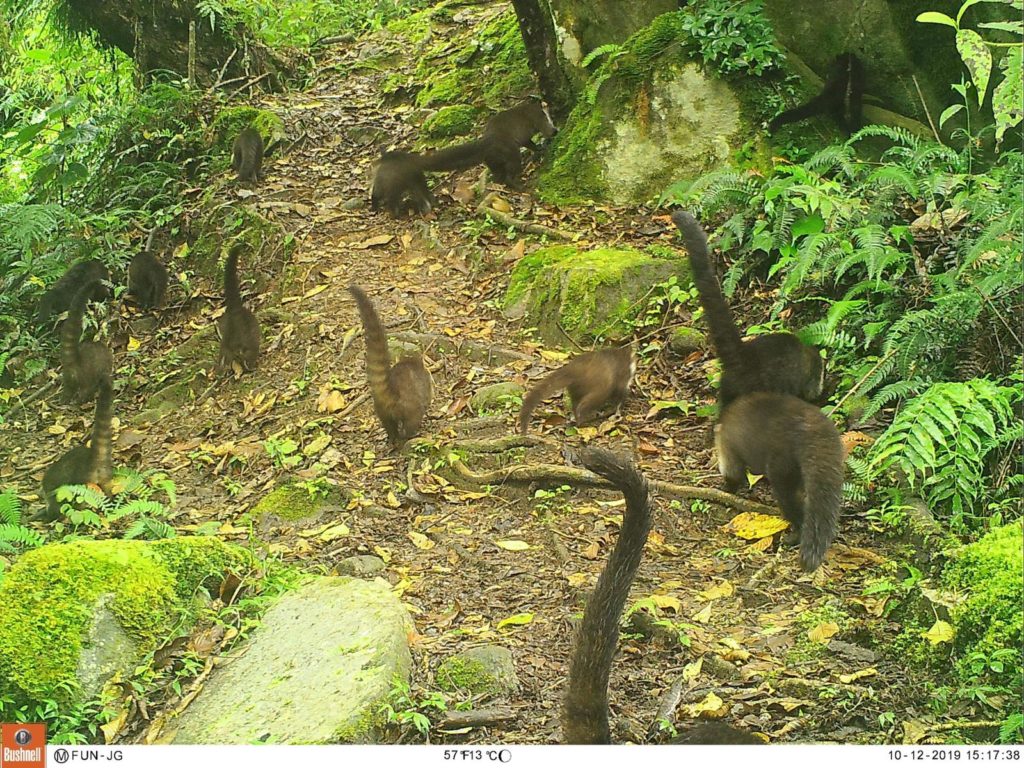
We have continued to participate with the environmental education program, which next year will begin to be implemented in local schools. Our most recent contribution is with a demonstrative erosion box.
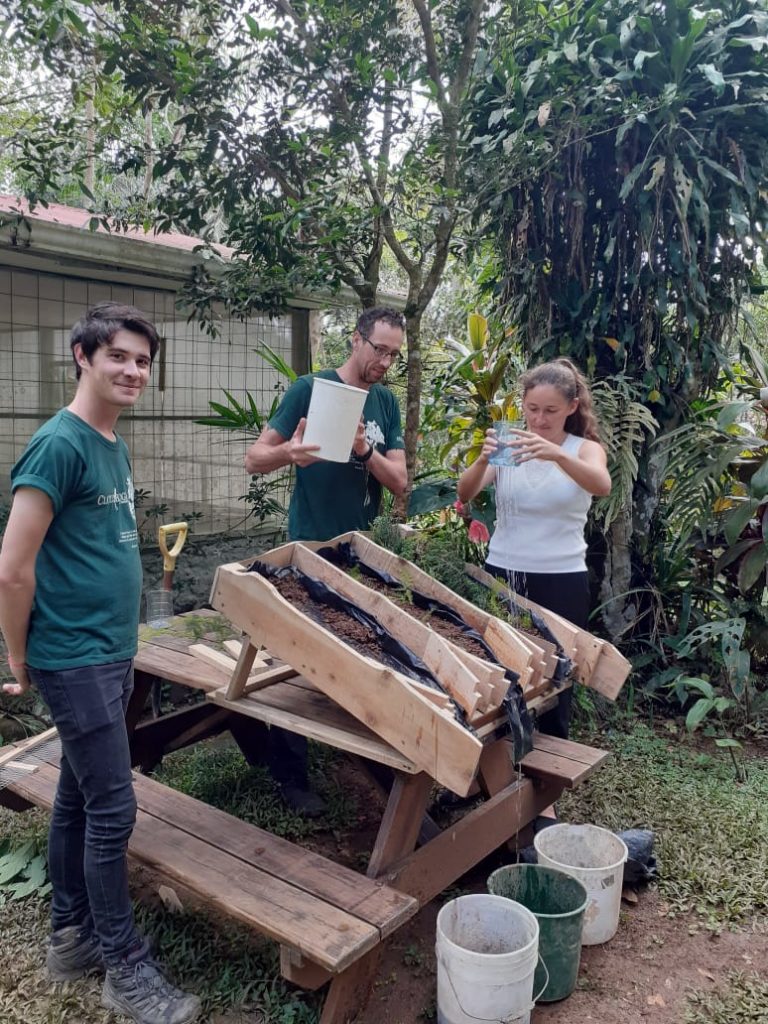
In Costa Rica, one of the main holidays celebrated in October is the «Día de las culturas». On October 12th, 1492, Christopher Columbus «discovered» America, though it is important to note that other cultures were living here already. For this reason, the date is now used to acknowledge the cultural diversity of Costa Rica, including eight indigenous cultures, Afro-Costa Ricans, and of course the Hispanic heritage.
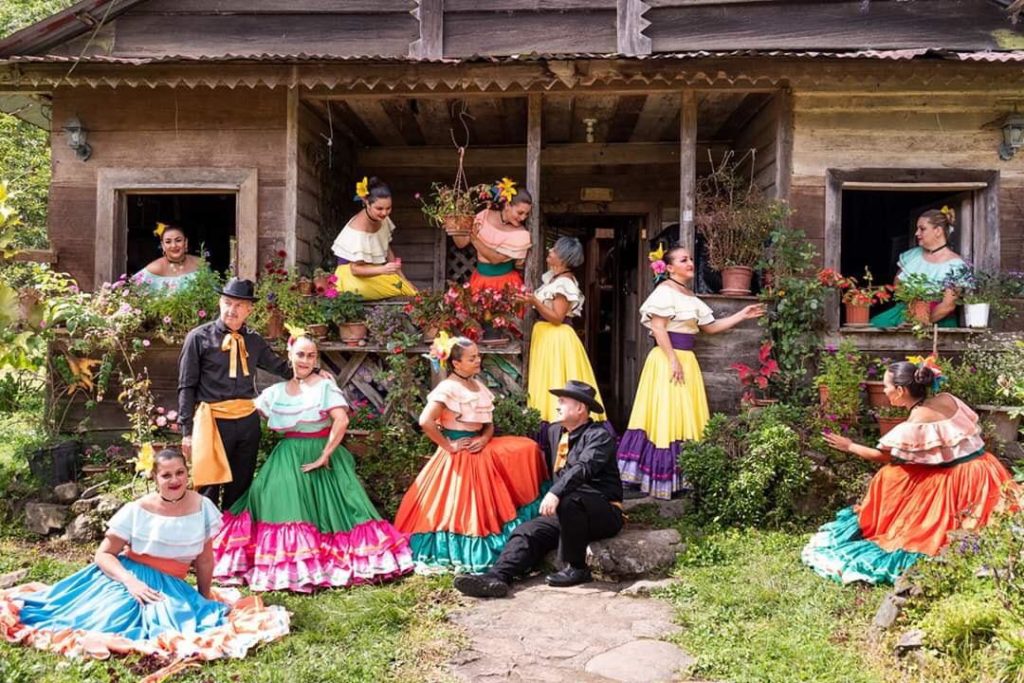
We are happy to announce that Cloudbridge has continued expanding our recreational activities for staff, volunteers and interns. The newest addition to our excercise facilities is a volleyball court. 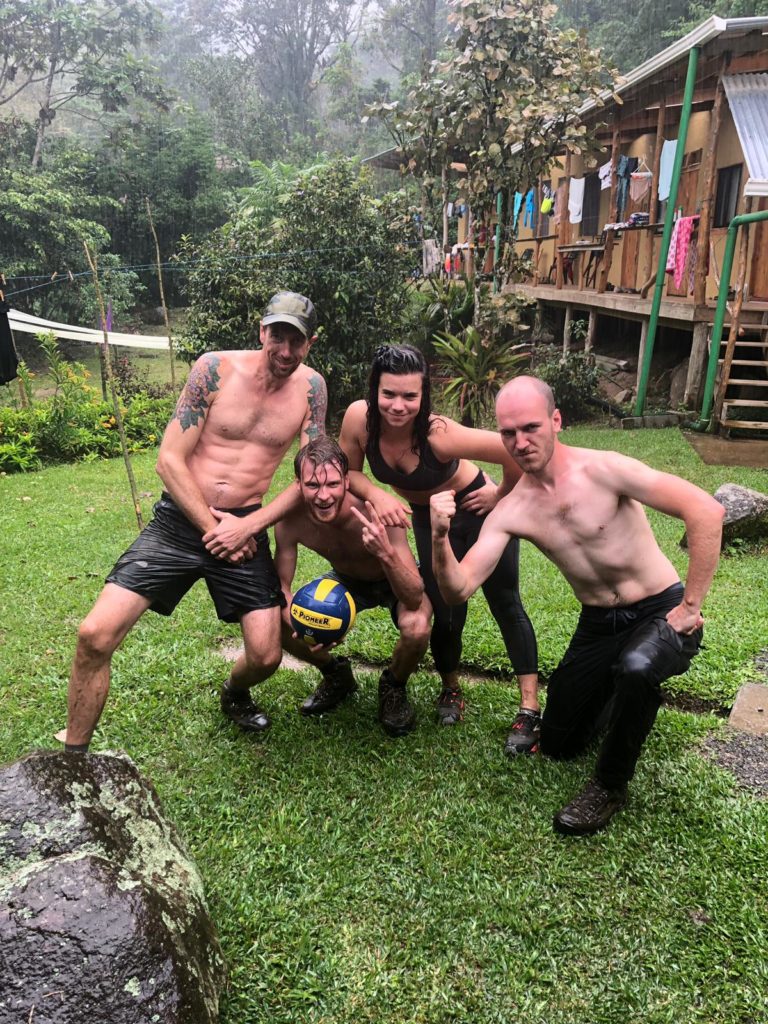
And for indoor activities, our recently departed intern Emma Bowman has handmade a lovely Cloudbridge Monopoly game.
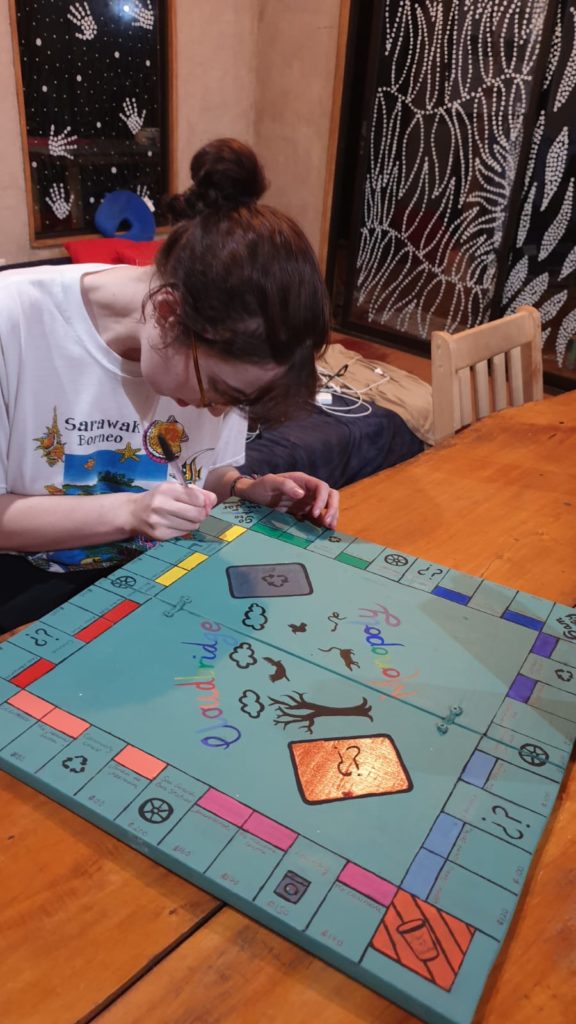
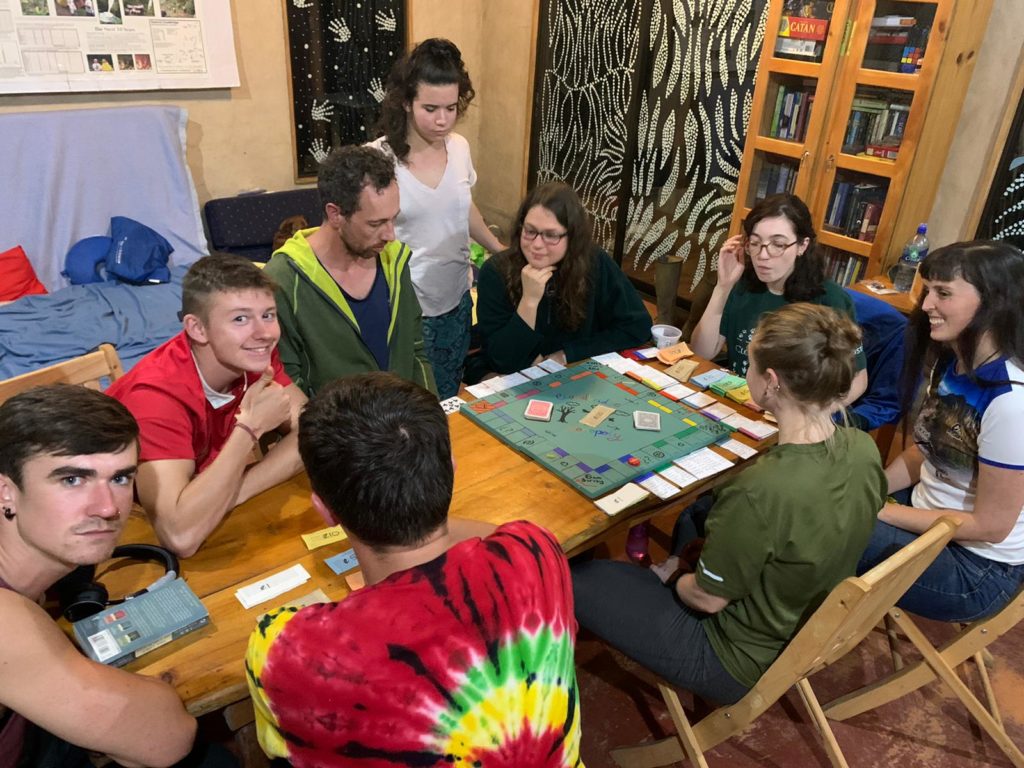
INTERNS AND VOLUNTEERS
Emma Bowman finished her research on hummingbird feeding dynamics this month. She spent the last few months observing hummingbirds feeding along the trails of the reserve as well as in the gardens around the buildings. The flowers that were most commonly fed from included: Yellow Jacobinia (Justicia aurea), a wax mallow (Malvaviscus concinnus), and a common pea plant (Phaseolus vulgaris) that is a remnant in the forest from when the area was farmed. While these plants were the most popular overall, some plants were exclusively fed upon by one species, while several hummingbird species might visit other plant species (see graphs below).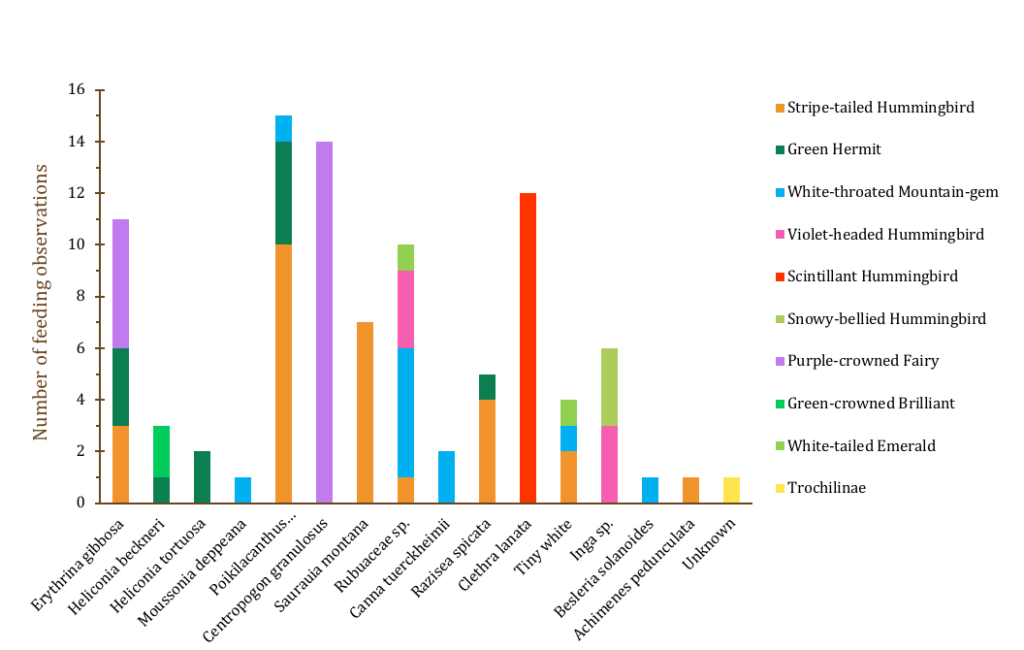
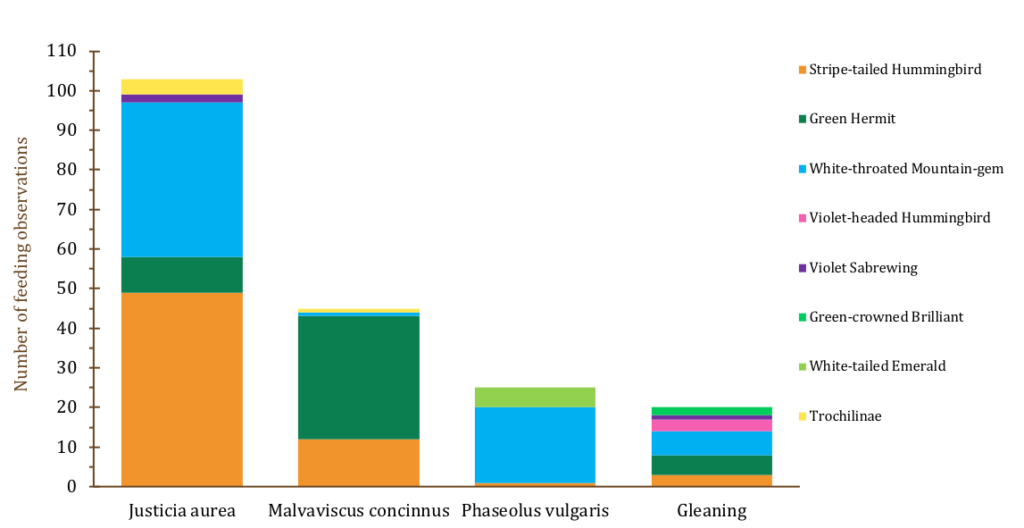
Her study produced many interesting findings. Comparing the trail and ornamental sites, she found that females preferred the trail sites, while males preferred the ornamental sites. She thought this may be because males are more territorial than females and as the ornamental sites had a much higher value than the trail sites (more flowers in a smaller area), they would gather there and defend those sites. This was particularly true for the White-Throated Mountain Gems (Lampornis castaneoventris) where the males were exclusively found at ornamental sites, and the females almost exclusively found on the trails.
She also found that 57% of the feeding events she observed were ‘illegitimate’. This means that instead of feeding from the front of the flower (and helping to pollinate the flower), the hummingbirds would pierce the flower at the base and steal the nectar without pollinating the flower. This is very interesting and seems to mean that some other organism would be helping to pollinate these flowers.
And finally, in support of the observations of Harry Elliott and Charlotte Smith from earlier this year, she also documented several hummingbirds feeding directly from the fruits of the ‘Snot Tree’ (Saurauia montana). This is a very unusual behaviour and has only been documented on a couple of occasions in the literature, so is exciting to see it again!Her final report is almost finished and we are looking forward to getting it up on the website for everyone to read!
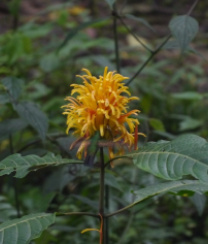
Justicia Aurea (Yellow Jacobinia) and Malvaviscus concinnus were the flowers most commonly fed from.
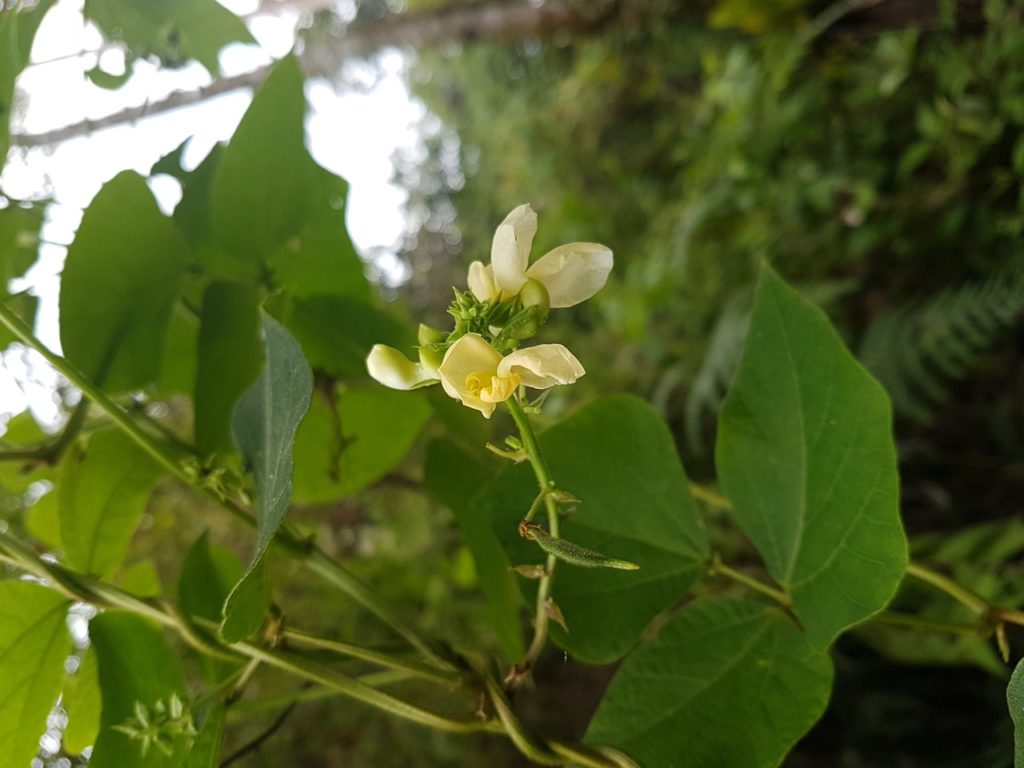
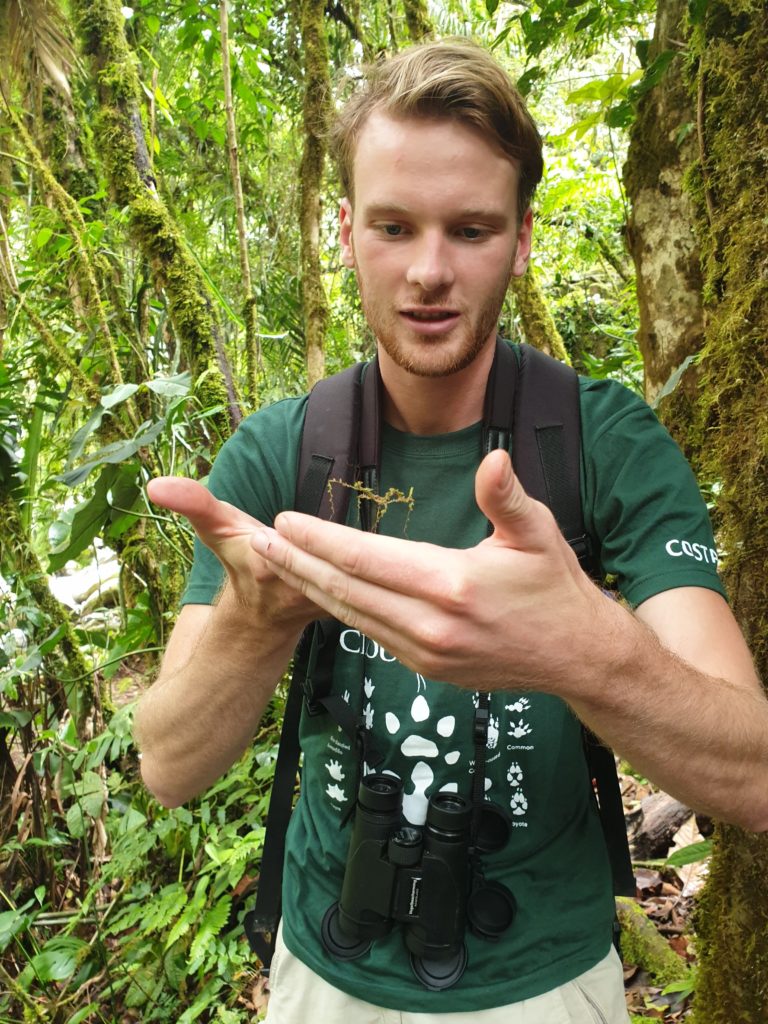
My name is Philippe and I am a bachelor student of biology from Leiden, the Netherlands. I came to Cloudbridge to learn more about the tropics, gain more fieldwork experience and to enjoy the beauty of this forest. During my time at Cloudbridge I will be doing a habitat assessment to create more knowledge on the specific habitat of five (near) threatened bird species.
_________________________________________________
Hello! We are Dani and Elsa and we are a couple. I (Dani) am from Uruguay and I (Elsa) am Italian and we are both living in Spain, in Malaga. We have left our jobs in Spain for a few months to undertake a trip from Costa Rica to Peru combining travel with volunteering related to environmental protection such as reforestation and conservation.
Our desire is above all to carry out field work in areas of forests and jungles. The first stage is in Cloudbrige, where I (Elsa) had visited in 2012 and have now fulfilled my desire to return. For me, Dani, this is my first time in Costa Rica, and my first adventure of this kind. Our common goal is to contribute everything we can to this project that we love and that gives us the opportunity of learning about what we like, soaking up the energy of this magical place.
Here at Cloudbridge, we are very thankful for all of the work that Dani and Elsa have put into our electrical installations, infrastructure and more. Thank you!
_________________________________________________________
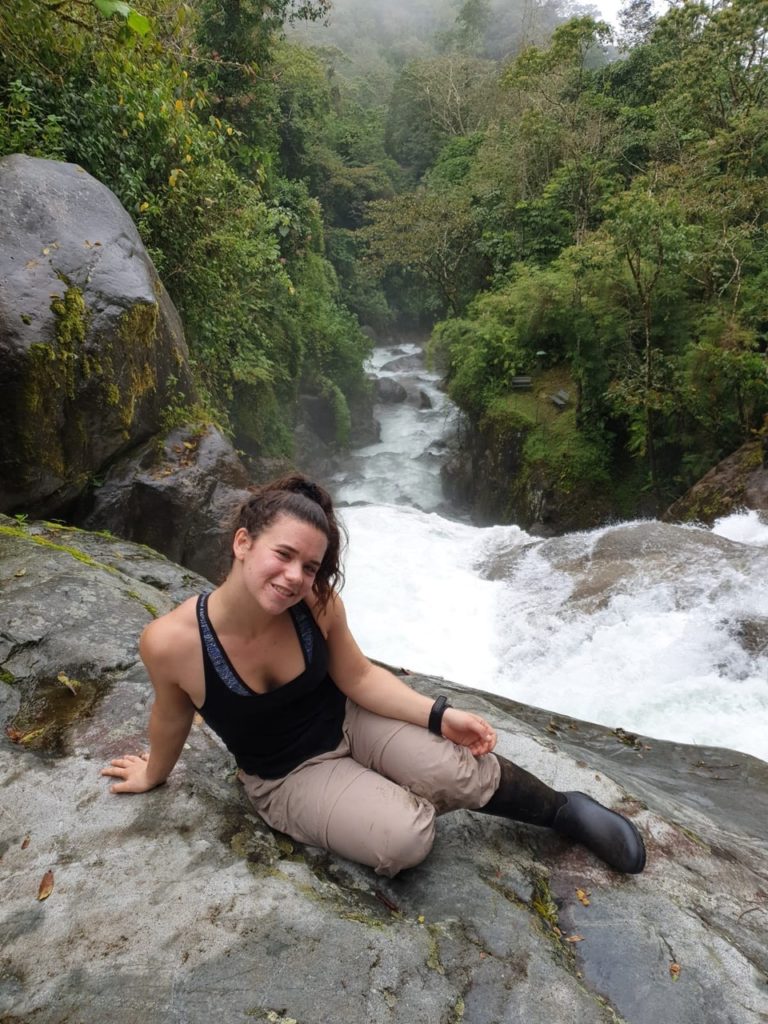
Hi, my name is Sophia, and I am from the San Francisco Bay Area in California. I am here as part of my gap year to gain more field research experience before I start university. During my time at Cloudbridge, I will be conducting surveys on glass frog behaviors as well as assisting with the other projects. Super excited for the next few months!
____________________________________________________________
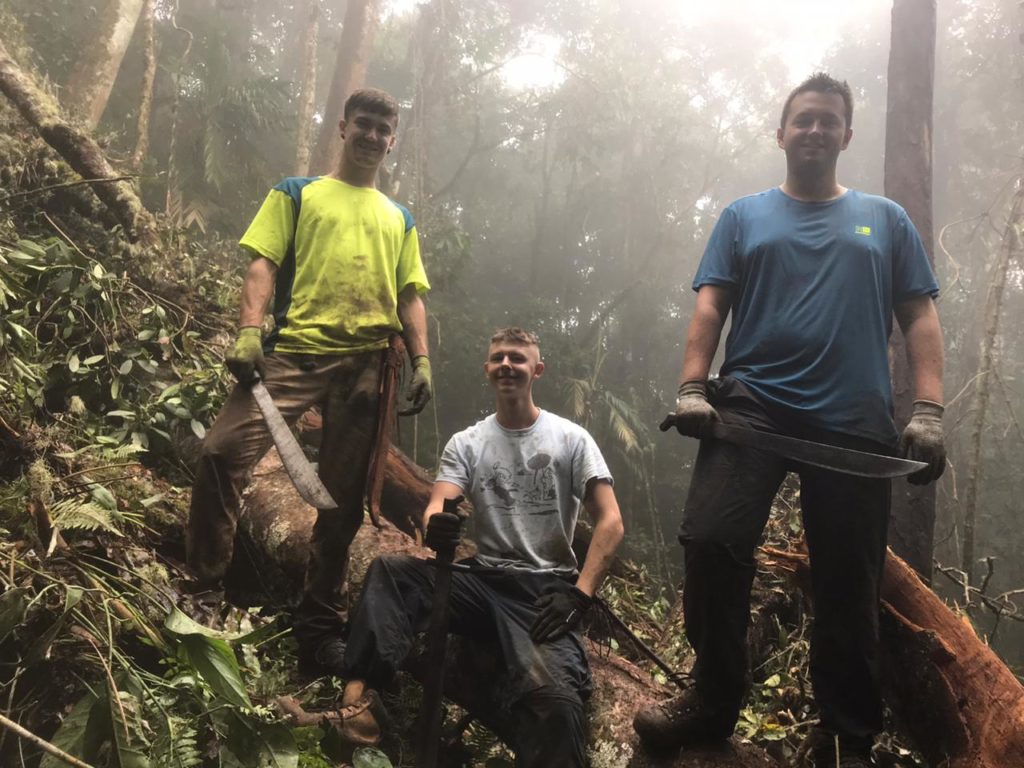
From left to right: Ben, Jacob and Max, the Tree Musketeers from Bangor University.
My name is Ben and I’m a Forestry student from Bangor University in North Wales. I have travelled to Cloudbridge with 2 of my classmates as part of a work placement year. I am from Essex in England and am formerly a tree surgeon / landscape gardener. I chose to come to Cloudbridge as I was keen to undertake research within a tropical cloud forest. It seemed an exciting opportunity, completely different to anything I had experienced before. I have just taken over a project at Cloudbridge, I will be looking at natural regenerated vs planted sites and comparing the carbon storage. I am at Cloudbridge for another 7 months and look forward to meeting lots of new people along the way!
Hola I´m Jacob from Belfast! I´m here with my dos amigos from university. We study forestry in Bangor Wales. I am here in Cloudbridge for 7 months as part of my work placement as I am interested in tropical forestry. I aim to carry out my own project and aid in others. Pura vida!
My name is Max and I’m from the UK. I study forestry at Bangor University in North Wales and am here with two of my classmates, using our time at cloudbridge as an international work placement. During my time here I will be taking on some ongoing research projects and maintaining the trees of the beautiful nature reserve. I chose to come to Costa Rica because I have always been interested in tropical forestry as the trees and plants here are so different to anything that grows in the UK. Coming on an international placement is also a great way to meet new people from all over the world.
IMAGES FROM OUR CAMERA TRAPS AND INTERNS
The Tapir (danta) is the largest terrestrial mammal of the neotropics.
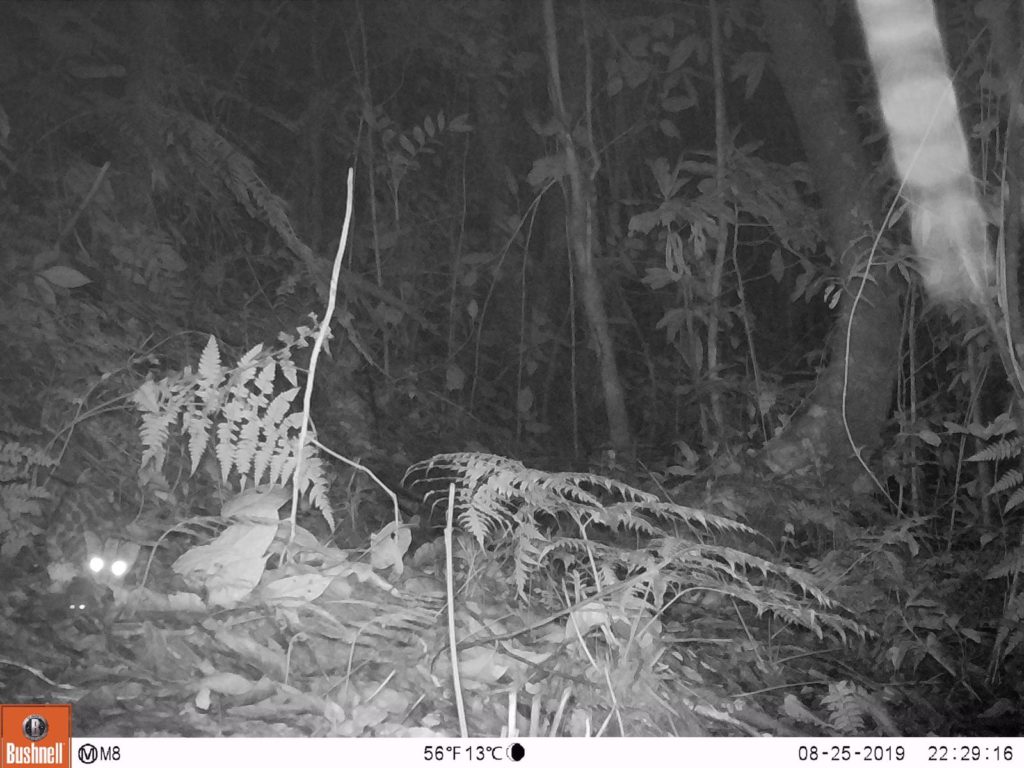
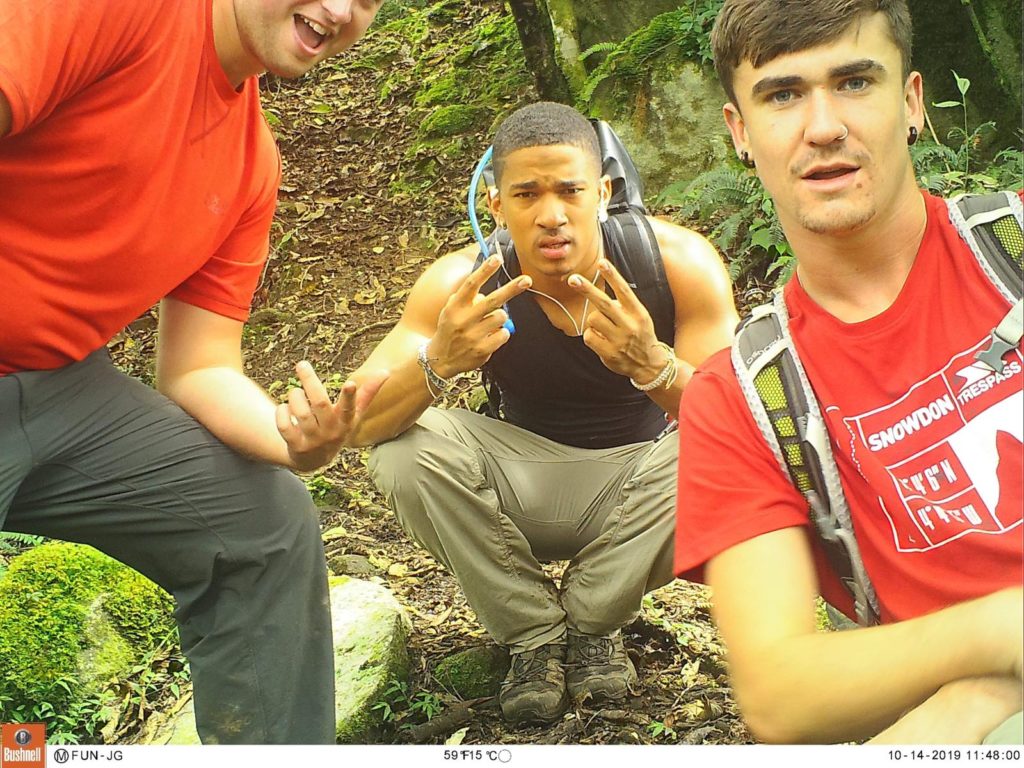
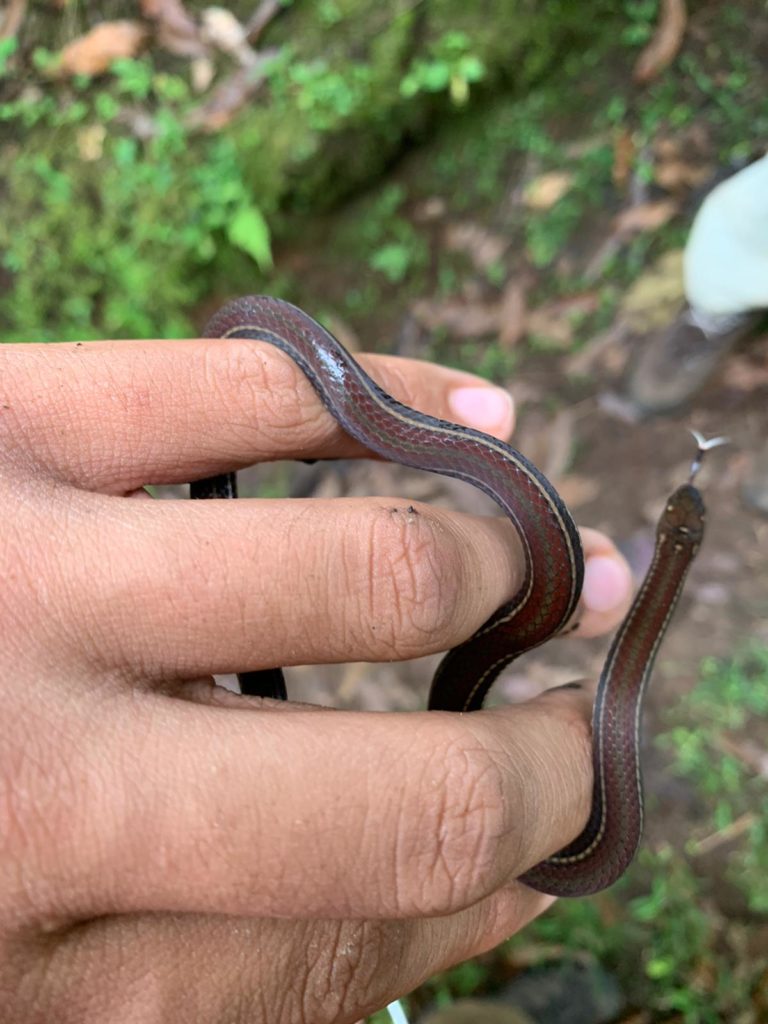
RECOMMENDED READING
This month marks the one-year anniversary since the IPCC released its Special Report on Global Warming of 1.5ºC. I´m sure many of you remember the splash that this report made around the world, effectively communicating the urgency of our situation. For those of you who have not yet browsed this landmark special report, you can do so here: https://www.ipcc.ch/sr15/
In the same vein of exploring our climate emergency, and proposing solutions, author and activist Naomi Klein has recently published her newest book, On Fire: The (Burning) Case for a Green New Deal. For more information, please check here: https://naomiklein.org/on-fire/
And just in case you still think that the scientists may be exaggerating, this article explains why this is not the case https://www.theguardian.com/commentisfree/2019/oct/25/the-real-reason-some-scientists-downplay-the-risks-of-climate-change
This years Nobel Prize winners in the field of economics have argued that a more humane perspective should replace our need for rapid growth. https://www.theguardian.com/commentisfree/2019/oct/30/changing-world-better-economics-honest-humane?CMP=share_btn_link
Spending time in the forest, whether it be here at Cloudbridge or anywhere else with trees, allows us to slow down, and perceive things that in our hectic lives would usually be passed by. In this excerpt from her book «Erosion: Essays of Undoing», author Terry Tempest urges readers to slow down and listen to the trees. https://www.latimes.com/entertainment-arts/books/story/2019-10-07/erosion-terry-tempest-williams-excerpt?fbclid=IwAR3bp640yPbOgyJq4A5hnZyezmwaOKHa2rP7ROzfo7SHfLSMXAtCkgsFYPc

